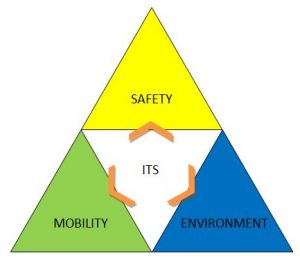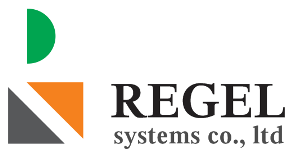Introduction
Intelligent Transportation Systems (ITS) technologies advance transportation safety and mobility by integrating advanced communications technologies into transportation infrastructure and into vehicles. ITS encompasses a broad range of wireless and traditional communications-based information and electronic technologies.
Transportation system in every country faces serious challenges in three fundamental areas;
- Safety
- Mobility
- Environment

ITS Applications Overview
ITS applications focus on both the infrastructure and vehicle, as well as integrated applications between the two, to enable the creation of an intelligent transportation system. Some of the most prominent ITS technologies already deployed worldwide include electronic toll collection, ramp meters, red light cameras, traffic signal coordination, transit signal priority, and traveller information systems.
- Electronic Toll Collection (ETC) – ETC supports the collection of payment at toll plazas using automated systems that increase the operational efficiency and convenience of toll collection. Systems typically consist of vehicle-mounted transponders identified by electronic readers located in dedicated or mixed-use lanes at toll plazas. ETC has the potential to significantly increase mobility on the Nation’s transportation system.
- Ramp Meter (RM) – Traffic signals on freeway ramp meters alternate between red and green signals to control the flow of vehicles entering the freeway. Metering rates can be altered based on freeway traffic conditions.
- Traffic Signal Coordination (TSC) – TSC provides the ability to synchronize multiple intersections to enhance the operation of one or more directional movements in a system. Some examples include arterial streets, downtown networks, and closely spaced intersections such as diamond interchanges. Adaptive traffic control is a traffic management strategy in which traffic signal timing changes, or adapts, based on actual traffic demand. This is accomplished using an adaptive traffic control system consisting of both hardware and software. Some examples include SCATS, InSync, MASSTR, SCOOT and MTSS.
- Red Light Camera (RLC) – RLCs detect a motor vehicle that passes over sensors in the pavement after a traffic signal has turned red. The sensors connect to computers in high-speed cameras, which take two photographs of the violation. Typically, the first photo is taken of the front of the vehicle when it enters the intersection, and the second photo is taken of the rear of the vehicle when the vehicle is in the intersection. Law enforcement officials review the photograph, and a citation is mailed to the registered owner of the vehicle.
- Transit Signal Priority (TSP) – TSP gives special treatment to transit vehicles at signalized intersections. TSP systems use sensors to detect approaching transit vehicles and alter signal timings to improve transit performance. For example, some systems extend the duration of green signals for public transportation vehicles when necessary. Because transit vehicles can hold many people, giving priority to transit can potentially increase the person throughput of an intersection.
- Traveler Information Systems (TIS) – Effective TIS are multimodal and support many categories of drivers and travelers. Traveler information applications use a variety of technologies, including Internet websites, telephone messages, social media, and television and radio, to allow users to make informed decisions regarding trip departures, routes, and mode of travel.
